Insulating My Bubble Wrapped Metal Barn
Reader DURIN in WESTERN NEW YORK writes:
“So glad I could see your site. So many different opinions. If I could explain my situation below.
I have a 40 x 80 x18 metal barn. It was built by the Amish. It has a 6 inch slab of concrete a 6 mil barrier taped under, 2 inches of foam insulation radiant heat by 5/8 inch pex. The Amish installed a RFoil bubble wrap that states it is R – 6.0 over the entire building. It is over the purlins on the roof and tight to the walls and all under the metal. It is white on one side and reflective on the other side, presently facing the metal walls to the exterior. The wall height ends at 18 feet and and the entire roof will be at 18 feet. I have a ridge vent that runs the length of the building. I have 18 inch soffits that are fully ventilated all panels.
I intend to insulate. I intend to insulate and have received so many different opinions. I am advised that Spray Foam, directly to bubble wrap may not adhere however, the Spray Foam expert that I was going to utilize has been doing so for 15 years without issue so long as the bubble wrap is tight for the walls so I am considering this. I would note that the foil bubble wrap is over the Perlin and touches directly to the exterior metal with the reflective side to the metal. During this past summer, it kept the barn, shockingly, cool compared to the outside. I live in Western New York, so I wanted to insulate. What I wanted to do was either use spray foam on the walls to fill all of the nooks and crannies up against the foil wrap OR I intended to use rockwool up against the foil wrap in the walls… I would then cover with the metal without an interior vapor barrier. For the ceiling, I was intending to use either a faced batt insulation with the unfaced side facing the attic or was going to use blown in insulation. I do not know if I need a vapor barrier between the insulation and the metal ceiling? I thought maybe a vapor barrier was necessary and may also hold blown in insulation from falling down if you need to remove a panel. I cannot afford to use spray foam in the entire building. And I thought I need to allow for condensation to escape from the inside of the barn into the ceiling to be taken out through the ridge vent so I had concern about whether a additional vapor barrier is required. I have some pictures below of how the barn looks and would wonder if you could give me any advice. If you require a fee, please let me know.
Thank you so much.”
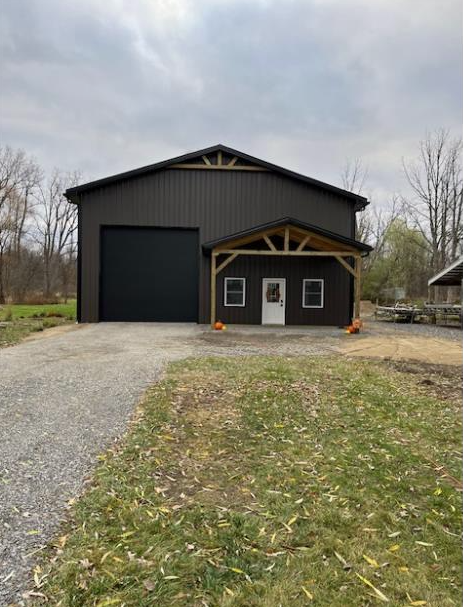
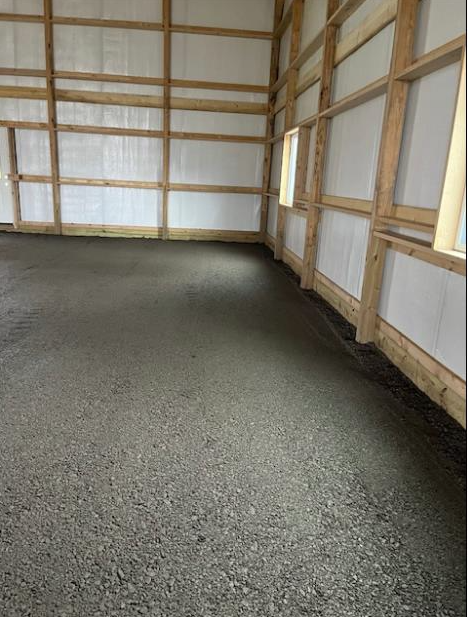
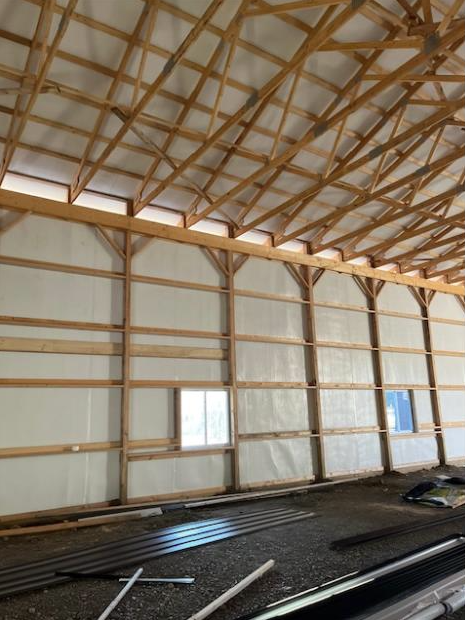
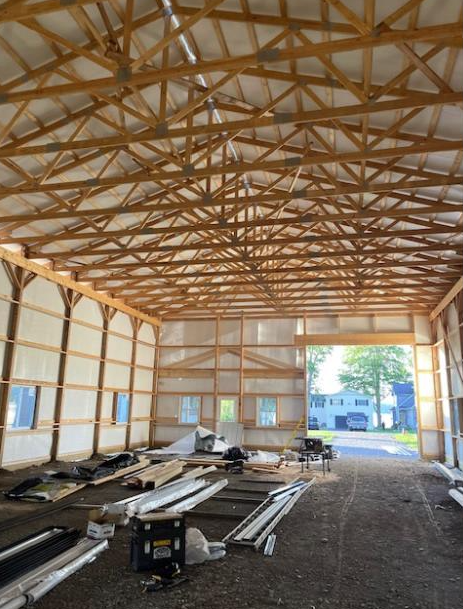
Thank you for your kind words, as well as offer to pay. My goal is for people to have structurally sound buildings they will love forever, so if my advice leads to this, it is all payment I would ever want or need.
I would not personally recommend spray foaming to a radiant reflective barrier, such as RFoil. While your proposed expert may not have had a previous issue reported, there is a potential for disaster. We have seen many such barriers have interior facings flake or peel off. Not immediately, but roughly a decade or so in service. If this were to be your case, you would never know it inside of a finished wall, other than by increased energy costs. My preference would be Rockwool, no interior vapor barrier, then your steel liner panels.
For your ceiling, should you ever have to replace a panel (I do not know anyone who has) a new panel could be placed directly over a damaged panel. You do want warm moist air to have an escape route into your attic space. I would blow in granulated Rockwool or fiberglass directly over ceiling steel.
Due to your steel liner panels, you may find it necessary to mechanically dehumidify your building.
Best of success to you.
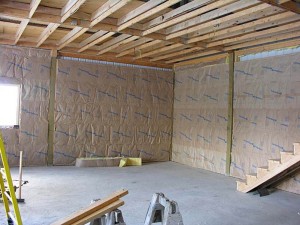 On the two outside walls of the shop I placed 1 ½ inch foam board between each of the barn wall girts then built 2×6 stud walls in between the pole legs. I then placed built two remaining free standing 2×6 walls to complete the shop walls. I placed faced R19 insulation in all the stud walls and finished them off with ACX plywood on the inside of the shop and CDX on the outside (free standing) shop walls. I then placed 22 foot long TGI’s as ceiling joists so I can have storage above the shop which I then placed ¾ inch tongue and groove plywood on top. I am now at the point to insulate the ceiling and finishing it off with a suspended ceiling with a gypsum type ceiling tile. I plan on placing R30 unfaced insulation in each of the shop ceiling bays but don’t know if I should use a poly type barrier before putting up the suspended ceiling.
On the two outside walls of the shop I placed 1 ½ inch foam board between each of the barn wall girts then built 2×6 stud walls in between the pole legs. I then placed built two remaining free standing 2×6 walls to complete the shop walls. I placed faced R19 insulation in all the stud walls and finished them off with ACX plywood on the inside of the shop and CDX on the outside (free standing) shop walls. I then placed 22 foot long TGI’s as ceiling joists so I can have storage above the shop which I then placed ¾ inch tongue and groove plywood on top. I am now at the point to insulate the ceiling and finishing it off with a suspended ceiling with a gypsum type ceiling tile. I plan on placing R30 unfaced insulation in each of the shop ceiling bays but don’t know if I should use a poly type barrier before putting up the suspended ceiling. 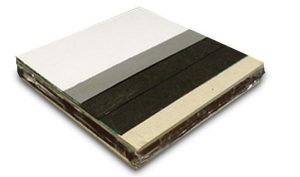
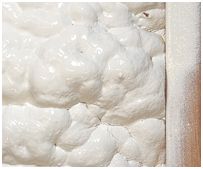
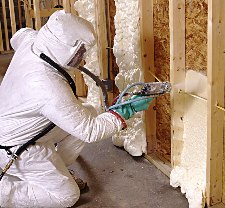 For starters, keep in mind (by Code) spray foam insulation cannot be left exposed, it has to be covered with inflammable material – like gypsum wallboard. Gypsum Wallboard is not as flexible as steel, so it has deflection criteria which mean upsizing the roof purlins from 2×6 to 2×8, or changing the column spacing to 10’ on center(o.c.). In the end, when I priced it out the change to 10’ o.c. was less costly, adding only about $900.
For starters, keep in mind (by Code) spray foam insulation cannot be left exposed, it has to be covered with inflammable material – like gypsum wallboard. Gypsum Wallboard is not as flexible as steel, so it has deflection criteria which mean upsizing the roof purlins from 2×6 to 2×8, or changing the column spacing to 10’ on center(o.c.). In the end, when I priced it out the change to 10’ o.c. was less costly, adding only about $900.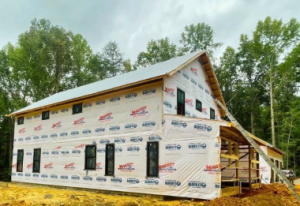 I also try to keep abreast of new products and innovations. Here is one which sounds good, but may not deliver.
I also try to keep abreast of new products and innovations. Here is one which sounds good, but may not deliver.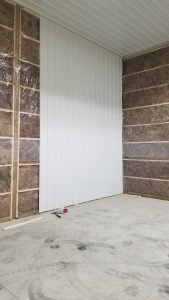 TextraFINE® Post Frame insulation is made from inorganic silica sand which is formed into long textile-type glass fibers which are bonded together in random orientation by a stable thermosetting binder. This process produces unusually strong, resilient insulation which will return to full thickness following compression.
TextraFINE® Post Frame insulation is made from inorganic silica sand which is formed into long textile-type glass fibers which are bonded together in random orientation by a stable thermosetting binder. This process produces unusually strong, resilient insulation which will return to full thickness following compression.
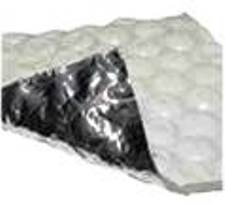
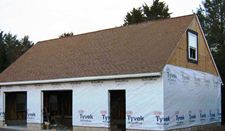
 If the builder would have properly installed the insulation between the purlins, with the Kraft facing towards the climate controlled area, making sure all seams were sealed, it would have been both effective as insulation and the vapor barrier would have kept the warm moist air inside the building, from condensing on the underside of the roof steel.
If the builder would have properly installed the insulation between the purlins, with the Kraft facing towards the climate controlled area, making sure all seams were sealed, it would have been both effective as insulation and the vapor barrier would have kept the warm moist air inside the building, from condensing on the underside of the roof steel.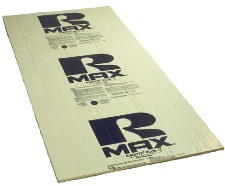 polystyrene, polyisocyanurate (also known as polyiso) and polyurethane.
polystyrene, polyisocyanurate (also known as polyiso) and polyurethane.





